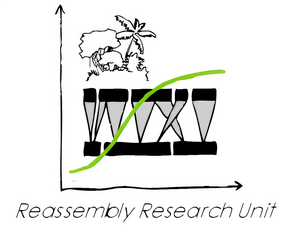REASSEMBLY - Interactions between saproxylic insects and consequences for wood decomposition
REASSEMBLY OF SPECIES INTERACTION NETWORKS
Resistance, resilience and functional recovery of a rainforest ecosystem
Subproject 7
Main goal: The objectives of our subproject are to i) characterize the responses of saproxylic communities to forest degradation, ii) analyze the re-assembly of complex networks of saproxylic communities following anthropogenic disturbance, and iii) quantify the effect of saproxylic communities and their biotic interactions on decomposition rates along the forest recovery gradient in a tropical rainforest.
Project description: We will focus on communities of three principal saproxylic insect taxa (beetles, termites, and ants) and saproxylic fungi in naturally occurring dead wood as well as experimental dead wood objects. We aim to gain a better understanding of the role of biotic interactions (competition, facilitation, and predation) among the insect taxa in shaping saproxylic communities and potentially affecting fungal communities in dead wood. Changes in community composition due to anthropogenic disturbance and / or altered re-assembly processes due to priority effects may have knock-on effects on decomposition rates.
It has been shown that dead wood diversity is increasing along succession non-linear with high amounts in early and very late succession stages. Hence, we hypothesize that dead wood diversity and related insect diversity is following a U-shape along the recovery gradient, with largest diversity in natural forests (Hypothesis 1). Because humans tend to homogenize dead wood features and related networks, we hypothesize that networks of insects are increasingly complex and interactions more specific along the recovery gradient towards natural forests (Hypothesis 2). Hence, we hypothesize that with this increasing diversity and complexity of communities, we expect a decrease in habitat filtering effects and an increase in biotic interaction effects such as facilitation and competition effects along the forest recovery gradient (Hypothesis 3). Because some insects, such as termites or larger beetles, have been demonstrated as highly efficient in the decomposition process in the tropics, we expect a strong effect on decomposition rates if these groups are excluded from wood (Hypothesis 4). Termites colonize the wood from the litter surface. Therefore, we hypothesize that degradation within a tropical forest by removal of the litter, e.g. by burning or erosion, will affect the decomposition rate by exclusion of some taxa (Hypothesis 5).
Funding: DFG-funded Research Unit REASSEMBLY (FOR 5207)
Further project information can be found here




